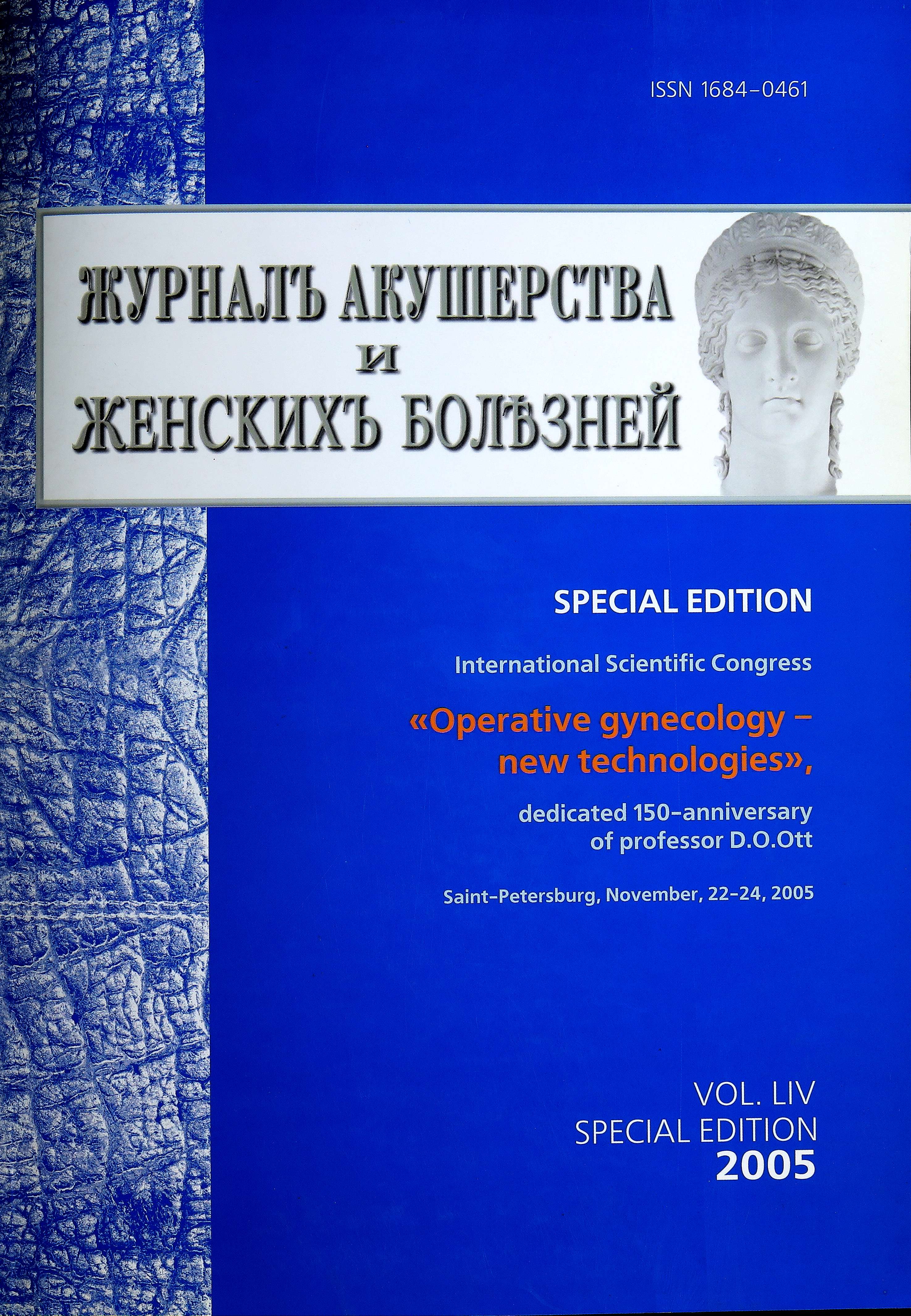Comparing outcomes of tvt versus tvt obturator sling procedures in stress urinary incontinent patients: a prospective cohort study
- Authors: Korshunov М.Y.1,2, Sergeeva L.V.1,2, Sazykina Е.I.1,2
-
Affiliations:
- Pavlov’s Medical State University
- Leningrad Regional Hospital
- Issue: Vol 54, No 5S (2005)
- Pages: 67-68
- Section: Reviews
- Submitted: 15.11.2005
- Accepted: 10.11.2021
- Published: 15.11.2005
- URL: https://journals.eco-vector.com/jowd/article/view/87478
- DOI: https://doi.org/10.17816/JOWD87478
- ID: 87478
Cite item
Abstract
Objectives. Compare the subjective and objective outcomes and quality of life (QoL) in patients who underwent either a tension-free vaginal tape (TVT) or TVT Obturator sling procedure for their stress urinary incontinence.
Full Text
Objectives. Compare the subjective and objective outcomes and quality of life (QoL) in patients who underwent either a tension-free vaginal tape (TVT) or TVT Obturator sling procedure for their stress urinary incontinence.
Material and methods. Prospective cohort study including patients (N=51) who underwent either a TVT (N=31) or TVT-0 (N=20) between September, 2002 and May, 2005. Objective outcome variables included cough provocation test with patient in upright position and subjective outcome variable included patient reported stress incontinence three months postoperative. QoL was assessed with modified King’s health questionnaire. Statistical chi- square analysis was performed to compare subjective and objective outcomes of the two procedures, and t-test - for comparing differences in QoL scores. RESULTS: 9 (29%) patients in TVT cohort and 7 (35%) patients in TVT-O cohort had anti-incontinence procedure alone. Others had one or more concomitant procedures for their pelvic organ prolapse. On physical examination, including cough test, there was no any difference in the percent cured of stress urinary incontinence (100% both for TVT and TVT-O). Subjective cure rates were similar between the cohorts (96,8% vs. 95%, p=0,674). There were more post-operative obstructive voiding patterns (9,7% vs. 5%, p=0,903) and symptoms of postoperative urgency (12,9% vs. 5%, p=0,657) in the TVT cohort. QoL scores before and after operation did not differ a lot between cohorts, showing significant improvement of the quality of life in both groups. Mean difference in preoperarive to postoperative scores are 53,25% in TVT and 61,5% in TVT-0 cohorts (p=0,220).
Conclusions. The subjective and objective cure rates for TVT-0 are similar to those for TVT. In addition, TVT-0 may offer the clinical advantage of less post-operative obstructive voiding and urgency symptoms and thus improving quality of life. Future work, especially randomized controlled trials, should include more cases as well as long-term follow-up.
About the authors
М. Y. Korshunov
Pavlov’s Medical State University; Leningrad Regional Hospital
Author for correspondence.
Email: info@eco-vector.com
Department of obstetrics & gynecology
Russian Federation, Saint Petersburg; Saint PetersburgL. V. Sergeeva
Pavlov’s Medical State University; Leningrad Regional Hospital
Email: info@eco-vector.com
Department of obstetrics & gynecology
Russian Federation, Saint Petersburg; Saint PetersburgЕ. I. Sazykina
Pavlov’s Medical State University; Leningrad Regional Hospital
Email: info@eco-vector.com
Department of obstetrics & gynecology
Russian Federation, Saint Petersburg; Saint PetersburgReferences
Supplementary files







